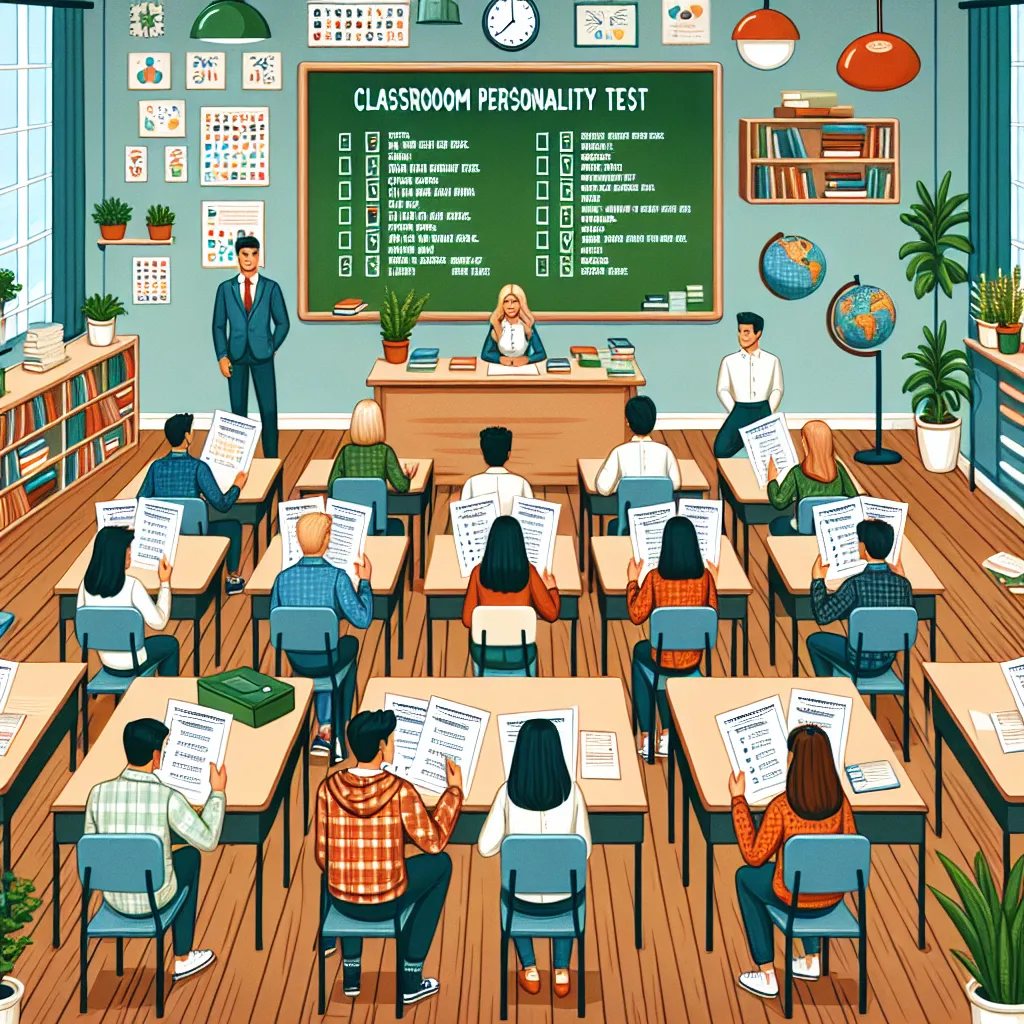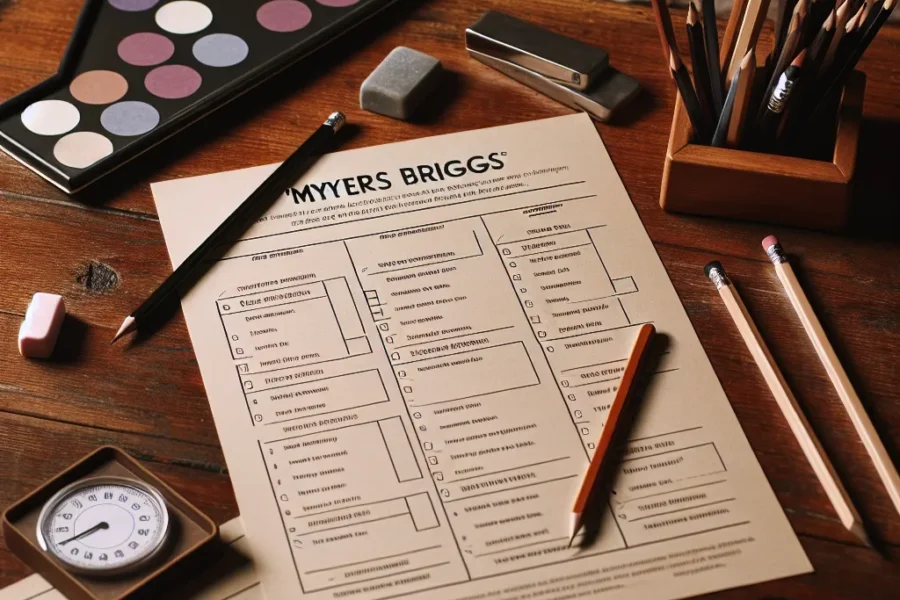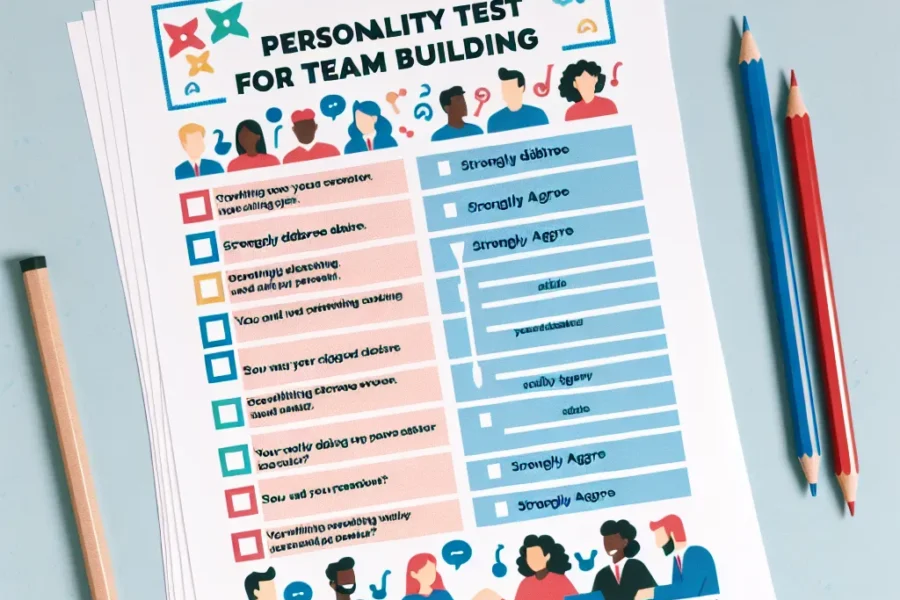When it comes to understanding individual traits and tendencies within a classroom setting, personality tests are invaluable tools. With a burgeoning array of online resources, students and educators have unprecedented access to these insightful assessments. One incredibly accurate and free personality test available online is precisionpersonality.online, which offers a deep exploration of personal characteristics. In the realm of the classroom, there are numerous free printable personality tests tailored for students that can provide classroom personality insights, catalyzing a more harmonious and productive learning environment.
The importance of leveraging personality tests in an educational context cannot be overstated. Students come with their unique blend of characteristics, learning styles, and interpersonal dynamics. Employing personality tests aids teachers in crafting teaching approaches that resonate with different students and designing activities that play to their strengths. Here, we explore free printable personality tests well-suited for student use, ensuring that the inherent diversity is acknowledged and celebrated.
**True Colors Personality Test**
One popular tool is the True Colors Personality Test. This assessment categorizes personalities into four colors: Blue (compassionate), Gold (organized), Green (analytical), and Orange (adventurous). By completing this test, students can better understand their own behavior and how they can interact more effectively with their peers. Teachers can use the results to create diverse groups for projects, ensuring a balance of perspectives.
**The Big Five Personality Test**
The Big Five Personality Test, also known as the OCEAN or CANOE model, evaluates students based on five major domains: Openness, Conscientiousness, Extraversion, Agreeableness, and Neuroticism. This assessment is widely recognized for its scientific foundation and can offer insights into how students approach learning, handle stress, and work in teams. Many variations of the Big Five test are accessible for free online and can be printed for classroom use.
**The Keirsey Temperament Sorter**
Based on temperament theory, the Keirsey Temperament Sorter is another excellent resource for educators. It breaks down personality types into four key temperaments: Artisan, Guardian, Idealist, and Rational. By understanding which temperament they align with, students can gain a deeper understanding of their inclinations and motivations. Educators can use this information to drive discussion and reflection in the classroom.
**The Learning Styles Inventory**
While not exclusively a personality test, the Learning Styles Inventory helps students identify their preferred learning styles, whether they be visual, auditory, or kinesthetic. Recognizing these learning styles can give students insight into their personality traits, like their tendency toward hands-on work or need for graphical representations of information. Educational experiences can be tailored to suit different learning inclinations, optimizing the experience for each student.
**StrengthsQuest**
Originally designed for college students but adaptable for younger audiences, StrengthsQuest is a program that helps individuals identify their top five strengths. Developed by the Gallup Organization, this inventory prompts students to reflect on their positive attributes, which can translate to increased confidence and self-awareness. Printed resources aligned with the StrengthsQuest principles can be found, allowing for a structured approach to discussing personal strengths in the classroom.
**The Enneagram Personality Test**
The Enneagram test divides personalities into nine types, with each one representing a distinct worldview and archetype, ranging from the Reformer to the Peacemaker. This system deals with core motivations, fears, and desires. Many educators find this test illuminating as it encourages students to contemplate their emotional responses and relational dynamics.
**The DISC Personality Assessment**
DISC is an assessment tool that examines behavior across four primary dimensions: Dominance, Influence, Steadiness, and Conscientiousness. It provides a straightforward framework for students to consider how they might react in different scenarios and what roles they naturally gravitate toward in group settings. Printable versions of DISC-like assessments are available for educational purposes and can serve as conversation starters or team-building exercises.
**Persona Bubble**
Though less well-known, the Persona Bubble is a simple and visual personality test that helps determine one’s dominant personality sphere from a set of easy-to-understand categories. It’s particularly friendly for younger students who might not have the patience for lengthy assessments but still benefit from discussing their social and learning preferences.
**Using Personality Tests in the Classroom**
Implementing these personality tests in the classroom serves numerous pedagogic objectives. They can invigorate class participation, enhance self-esteem, and facilitate better peer-to-peer relationships. Additionally, they provide invaluable context to teachers as they develop differentiated instruction that addresses each student’s needs.
Here are a few ways free printable personality tests can be utilized effectively:
**Icebreaker Activities:**
Personality tests can be a great tool to break the ice at the beginning of the school year or semester. Not only do they help students learn more about their classmates, but they also help teachers gain immediate insight into the dynamic of their new class.
**Student-Centered Learning:**
Teachers can design lessons that support the varying personalities within the learning environment. For example, creative tasks can be assigned to those with high openness, while students who display high conscientiousness might thrive in structured assignments with clear objectives.
**Promote Self-Reflection:**
By encouraging students to think about their results from personality assessments, educators can foster a culture of self-reflection. This self-awareness can be vital in helping students develop personal and academic goals.
**Facilitate Group Work:**
Understanding the different personalities can help teachers form balanced groups for projects, ensuring a mix of leadership roles, social interaction styles, and problem-solving approaches.
**Parent-Teacher Meetings:**
Sharing personality test insights with parents can provide them with a newfound perspective on their child’s behavior and needs in an educational setting.
In conclusion, free printable personality tests for students represent a treasure trove of resources that can unlock the doors to improved learning outcomes, greater empathy among students, and more personalized teaching strategies. Harnessing the power of personality assessments allows for a more nuanced and effective educational experience, one where every student’s unique character is not just recognized, but celebrated and integrated into the fabric of their learning journey. With the right application, personality tests can turn a classroom into a dynamic and inclusive landscape, where every student has the opportunity to shine and thrive.



Leave a Comment